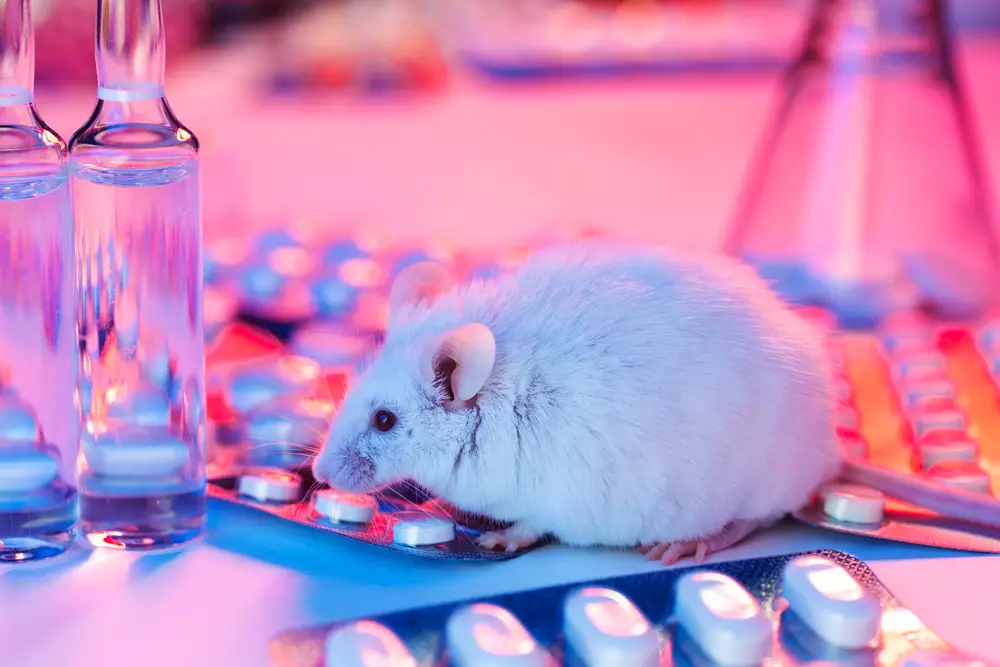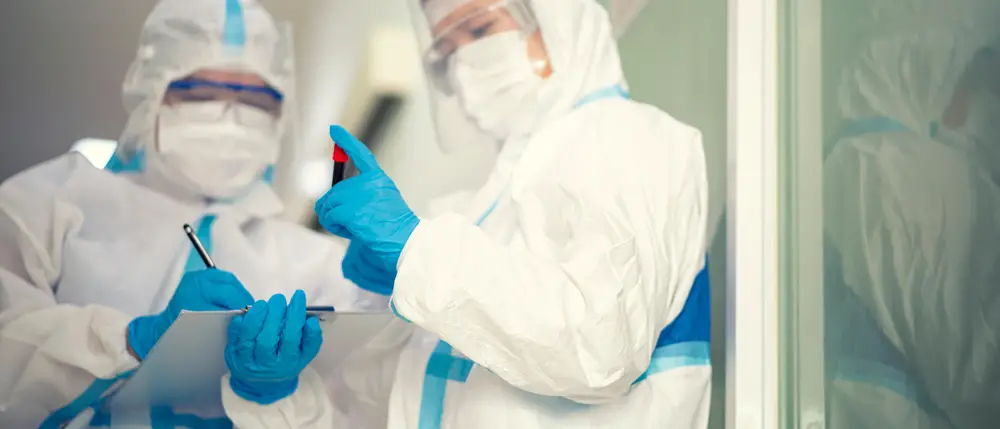Unfortunately, millions of animals are forced to endure pain at the hands of people for the sake of research. We know that cosmetic animal testing is prolific – but what about science? Why and when are medicines tested on animals too?
There are dozens of countries that allow, and require, animal testing to be done on medicines before they are released on the market. However, some countries have banned this practice and are using alternative methods.
If you want to know whether or not your country is one of the ones that still require animal testing for drugs, we can help. Read on to find out how many animals suffer from drug-related testing and how their suffering could be avoided with more successful alternative methods.
Why Are Medicines Tested on Animals?
Testing a new drug on a human is deemed unethical by society because it could negatively affect their wellbeing or possibly kill them. Due to this, a large part of society has considered that animals' lives are less important than humans', so it is okay to test new drugs on them first.
This is one of the historical reasons that animal testing initiated to begin with – medical research and development.
Some animals are biologically similar to humans, allowing researchers to use them for certain drugs for diseases that they should react to similarly as a human would.
For example, the polio vaccine was tested for effectiveness on monkeys due to their biology being similar to ours.
Also, animals are considered "dispensable" to researchers. So, if something goes wrong, they can always just find a different animal. If something were to go wrong when testing on humans, it is a lot less likely they will be able to find another human willing to take the risk.
However, there are some problems with animal testing:
Commonly Required Medicine Animal Tests
Animals endure a large number of tests in "preclinical" experiments. These tests are meant to assess the safety of all aspects of the new drug, such as the ingredients or minor changes in the formula.
All animals tested used in these experiments are killed at the end of the test, even if they happen to survive it.
Test | Types of Animals |
|---|---|
Acute (short term) toxicity | Rats, dogs, primates |
Subchronic toxicity (14-180 days) | Rats, dogs, primates |
Chronic toxicity (lifetime) | Rats, dogs, primates |
Cancer-causing effects | Rats, mice |
Toxicity to reproductive systems | Rats Rabbit, rats Rats |
Specialty studies | Hamsters, mice |
After these tests, drugs typically undergo three phases of clinical trials before being considered safe for widespread human use.
Is Medicine Testing on Animals Effective?
The truth is, they are not as effective as people believe. 90% of drugs fail in human trials after receiving promising results in animal trials, which is why even researchers don't fully trust them.
Although most animals tested on are similar to our biological makeup, there are still vast differences between them and us. As a result, drugs that are safe for them may mislead us into thinking they are safe for humans, when they are not.
How Many Animals Are Tested on for Medicines?
It is hard to say the exact number of animals that are used for testing worldwide for the development of new medicines because many countries do not keep proper track of these numbers.
In general, though, 4,000 to 5,000 animals are tested on for the standard regulatory tests – for just one drug. The entire drug development process likely results in a much higher number of tests that we cannot estimate.
In 2020, 53 new drugs were approved in the United States alone. That means there were at least 212,000 used in animal testing during 2020 for new medicines. These numbers do not take into consideration the drugs that were tested and failed.
Which Countries Have Banned Animal Testing?
Luckily, there are a few countries that have banned animal testing as a whole. These countries have recognized animals as sentient beings and acknowledge the ineffectiveness of animal testing results.
With such high failure rates, it is no wonder they are switching to cruelty-free alternatives and offer more reliable results.
Animal testing is illegal in places like:
Here’s an extensive list of all the do-good countries out there that deserve a shout out: These Countries Have Banned Animal Testing (2021)
However, there have been efforts in other countries to try to ban animal testing. Some countries have stepped away from requiring animal testing for cosmetics but still require it for drugs.
But even though they don't require it for cosmetics, they often still allow it. Take the United States, for example, which requires animal testing for drugs but not cosmetics, but has nothing in place to stop businesses from continuing to use it.
If you live in the U.S., or even a country that requires animal testing for cosmetics, like China, here’s how to look for cruelty-free options: Animal Testing Facts in Cosmetics You Need to Know (2021)
Although we can see small steps in the right direction are good, countries need to do more to stop the suffering of these animals. They should also be more motivated to find more reliable ways to test their drugs.
Alternatives to Animal Testing for New Medicines
The countries that have banned animal testing have switched over to cruelty-free methods like the following:
Organs-On-Chips
Researchers have found a way to grow human cells to mimic the structure of human organs. As a result, they can easily test the effects of new drugs within specific organs of a human body without harming any humans or animals. These "chips" are being manufactured and sold by various companies.
Cell-Based Tests and Tissue Models
Researchers use actual cells and 3D models of them to conduct prolonged experiments. This alternative works great for skin-related tests, like those often conducted on rabbits.
MatTek Life Sciences’ EpiAlveolar
PETA helped fund this 3D model of the deepest part of a human lung composed of human cells. This alternative allows researchers to easily study the effects of inhaling different chemicals into the lungs without forcing animals to inhale them.
Using Blood Cells to Detect Fevers
Researchers have found a way to use human blood cells to determine whether or not humans will have a fever response to a drug. The blood cells detect contaminants within the drugs that would usually cause a fever in patients.
Computer Modeling
In today's digital world, it is no surprise that we could come up with a range of computer models that simulate human biology. Researchers can use these computer models to predict the effect drugs will have on the human body without having to test it on another living being.
Isn’t is amazing what people can do for the sake of humanity? Although there are some issues around alternatives, they are still great strides in the right direction. Here’s the full scoop if you’re interested in finding out more: Animal Testing Alternatives (Ultimate Guide)
Final Note
There is no reason for animals to continue to suffer from drug testing when studies have shown that the test results are not very accurate. Continuing to test drugs on animals is a waste of researcher time and innocent animal lives.
With a multitude of testing alternatives and several countries to look to for guidance, it makes sense for the world to shift away from animal testing for drugs.
If you live in a country that still requires it, you can make efforts towards change by:
Change starts with the people. A society that deems animal lives less important than theirs will never be able to stop these innocent animals from enduring unimaginable pain for unpromising results.


